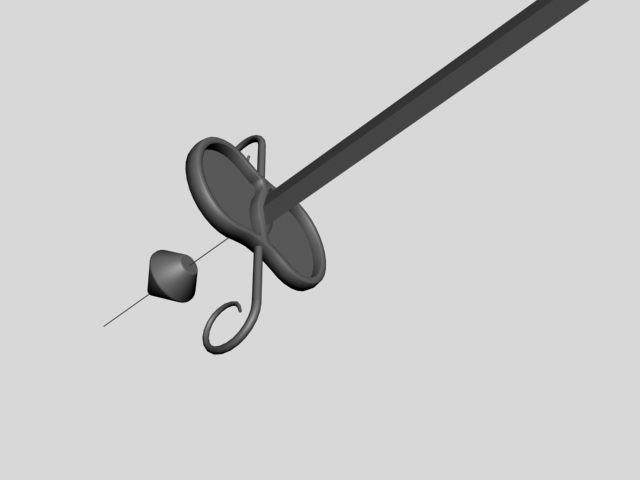Anyhow.
I have had the fortune to encounter a particularly interesting sword of what can only be described as remarkable and exceptional heritage, if it's provenenace were verifiable.
that provenance would reach back to the final few years of the 13th century, or start of the 14th century, with a northern european origin, possibly british origin, and certainly of british use.
I am, hoewever, from seeing it, sceptical of the heritage attributed to it...
the sword type is a large true two hander, approximately 1 metre 50cm to 1m 65 in length, straight-bladed spatulate with an unfullered diamond section blade, lacking a noticable ricasso. Corrosion is very minor, a deep patination appropriate to storage in a church or hall.
the grip itself was covered. I aim to get further detail and see to it that the modern covering is removed for study if it proves possible. All I can say is it has a hilt in the region of 12-15 inches in length.
the pommel and cross...
now we get to the tricky issue. without photographs, they're hard to describe. so I'll cheat, and use 3d software to make a model.
one of the the cross arms on the original is missing: I am unable to confirm it was broken off, however, under some light corrosion and patination. the surviving arm shape spirals downwards, toward the pommel, not upwards. Both sides of the blade have what at first appear to be ring hilt segments. however, both are filled, creating a large plate-like structure, rather than open rings.
the pommel is a cylinder of rhomboid section if cut through its centreline.
now with that cross and pommel, my gut insinct is that this is early 16th century, at best.
but the apparently reputable provenance of this sword dates it to being in use in the year 1300, +/- a maximum of 5 years either way.
So, I'm looking for the input of others. diamond section straight bladed, the size and proportions of a classic germanic Landsknechte beihander. Ring-quillons, which are filled. ornate cross with downward pointing spiralling decorative forms.
but reputedly from around 1300, not the 16th C.
any thoughts and opinions based on the meagre data I can offer in this mockup, would be greatly appreciated.
[/i]
